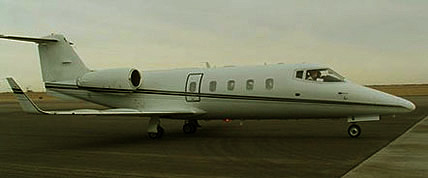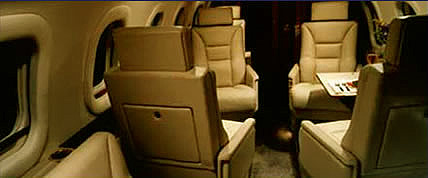Learjet 55

Learjet represents some of the finest midsize business aircraft in the world. The name itself is synonymous with streamline travel, and anyone who has ever flown in a Learjet has experienced a luxury flight first hand.
Gates Learjet, the manufacturer, announced the introduction of the Learjet 55 in 1977 at the Paris Air Show. The original prototype took its first flight on April 19, 1979. The success launched production and the first plane was delivered in 1981. The Learjet 55 kept many components of previous jets, the 26, 28 and 29 series, but adapted new components of its own.
Compared to its predecessor, the plane has a larger cabin and a larger fuselage. The aircraft cabin measures 5’7” in height, 5’9” in width, and 13’7” in length offering 50 percent more cabin space. It accommodates up to ten passengers maximum, and a crew of two in the cockpit. There are internal and external baggage compartments, a small lavatory and a small gallery for refreshments.
The wings of the Learjet 55 were adapted from the Learjet 28 and 29 models. The plane has a low-wing cantilever winglet, meaning the wing extends upward from the end. Looking a bit like horns, the name “Longhorn” was given to the first plane with this wing design. The reason for this winglet design is to increase efficiency, handling and safety. The plane’s drag is reduced by altering the airflow at the wings. Since the inception of this “Longhorn” wing style, Learjet is easily recognized by this characteristic.
The Learjet 55 has a maximum flight speed of mach .81 and cruising speed of 541 mph. A pair of
TFE 731-3A-2B turbofan engines power the jet, and 3700 pounds of thrust per engine give it the ability to
climb to a flight altitude of 51,000 feet. The T-tail design sits twenty percent higher than before and increases the plane’s directional stability.
There are variations of the Learjet 55 on the market, but only 147 models of the 55 were built. Production stopped in 1990 and gave way to production of a successor, The Learjet 60.
Learjet 55 Interior

Learjet 55 Layout





